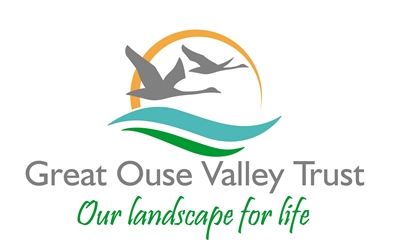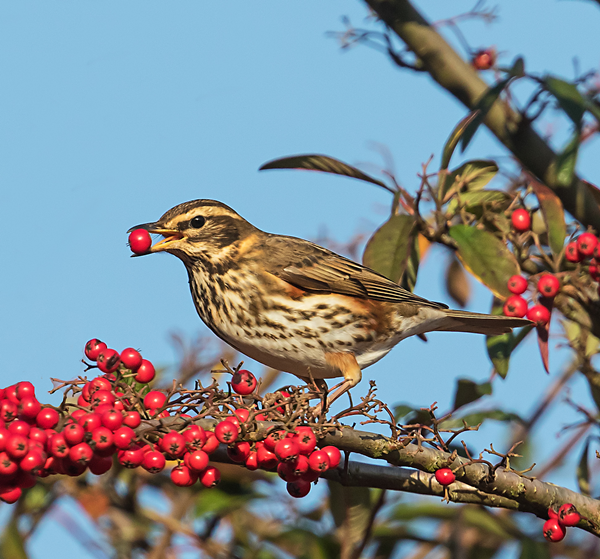The Great Ouse Valley Trust welcomes local naturalist Jim Stevenson as a contributor to our regular column. Here he describes how our river valley is used as a migration route for a wide range of wildlife but in particular by spectacular birds from Scandinavia - Redwings.

As I write it is late at night and I can hear a rustling, rattling whistling sound overhead, like a bike race in the sky. There are shadows flitting across the moon, though it’s not even Halloween yet. Soon after sun-up the half-lit sky is crowded with squadrons of starling-sized birds that weren’t here yesterday. It’s mid-October and the big autumn migration has really kicked off. This is the time when all the Scandinavian thrushes and blackbirds head our way in search of berries. In their thousands they lift off around sunset and cross the Danish coast at Heligoland where there is a bird-ringing station. They arrive on our east coast on a broad front. The coastal nature reserves in Lincolnshire and Norfolk are good places to greet them as they come in low over the water and drop into the bushes for a rest and a meal. As you read this, they should be widely scattered throughout our area - look for groups of large, well-marked thrushes in fields and bushes.

Redwings in their thousands arrive to feast on our autumn berries
PHOTOGRAPH BY NIGEL SPROWELL
Early in October I found two ‘pathfinder’ Redwings at Grafham Water where they were eating blackberries and drinking at a puddle. Then, on the 13th, I woke to see hundreds of them streaming over Brampton. Later in the morning more flocks passed overhead; mostly Redwings but with a few larger Fieldfares among them.
At night these birds use the stars to navigate but by day they follow features like ridges and river valleys. They even follow railway lines, probably because the embankments are often covered with berry-bearing bushes. The Great Ouse provides an obvious route inland from The Wash, not just for land birds but also for wetland birds such as ducks, geese, swans and waders. And it’s not just birds either; there are migratory fish such as Eels, and Common Seals can follow them as far upstream as Bedford. You can find Otter droppings by any weir or bridge along the entire length of the river. I have even seen butterflies migrating along the railway line that follows the Ivel/Ouse valley between Biggleswade and Huntingdon. People use that route too, and have done for centuries.
The valley itself was created by a series of glaciers, the largest of which pushed south all the way to Stevenage. This explains the route of the Great Northern Railway, and the Great North Road, but not the Roman route of Ermine Street that also left London but stuck to the higher ground before crossing the Great Ouse at Godmanchester en route to the Roman hub at Castor (near Peterborough) and beyond to Lincoln and York. The abandoned ‘ghost villages’ along the valley around Little Paxton may attest to the story that the plague travelled this way too.
The Great Ouse Valley Trust promotes for public benefit the conservation, restoration and enjoyment of the landscape, wildlife and heritage of the Great Ouse Valley and environs in the county of Cambridgeshire. For more information about the Trust please visit:

